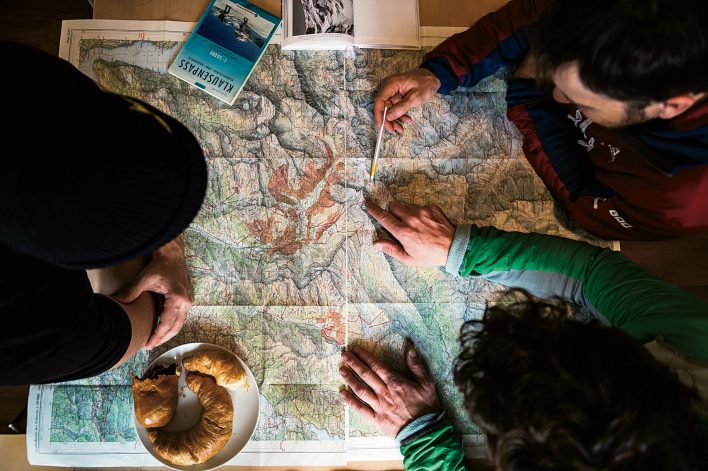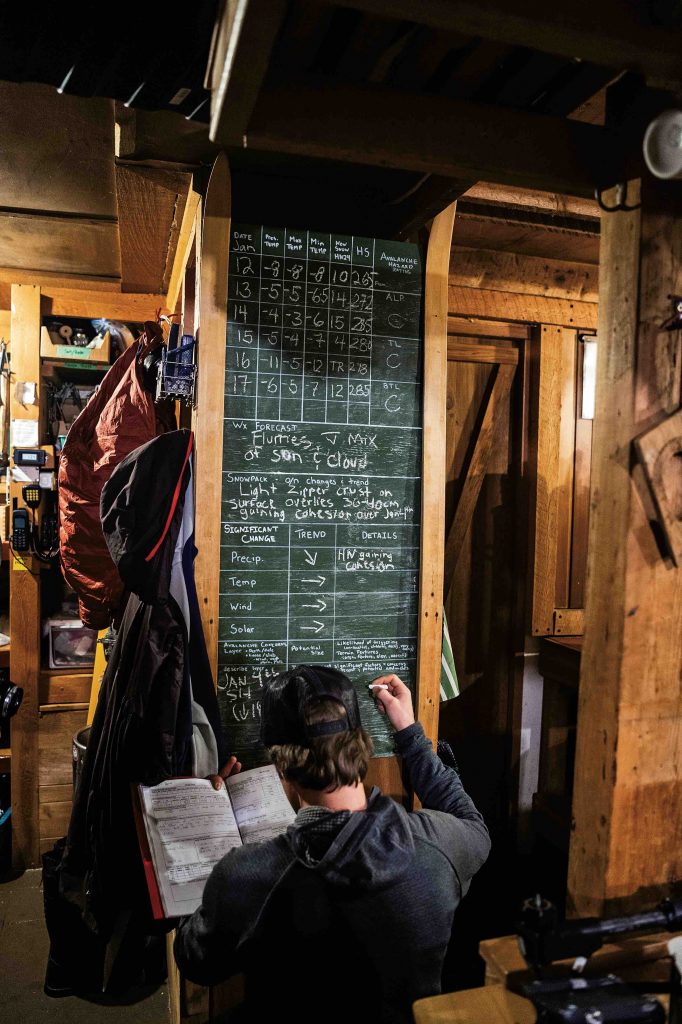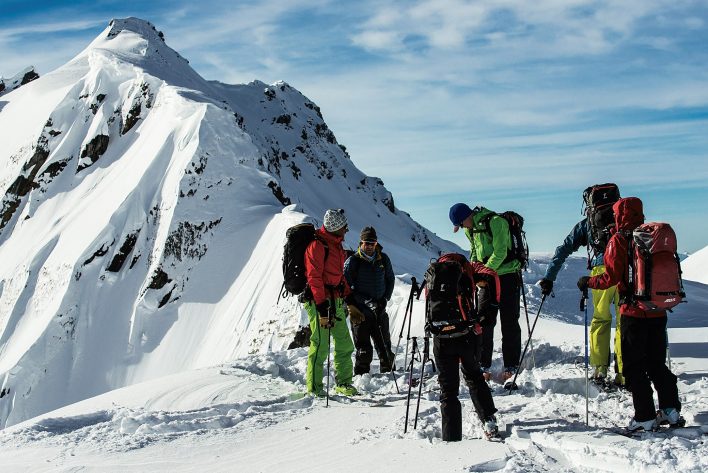It’s 6 a.m. I’m sitting in the Jackson Hole Mountain Guides office, coffee in hand, compiling snow, weather and avalanche data from the past 24 hours. My coworkers slowly filter into the office, laying their yellow Rite in the Rain books on the table. So begins the morning routine that’s common among ski guides prepping to go out for the day. But on my off days, I often find myself skipping morning conversations in which we share observations, identify red flags and discuss strategic mindsets. Instead of talking through weather, past avalanches and our limiting factors, my partners and I quickly run through the forecast in the parking lot. Sure, this is a type of morning meeting, but how can we communicate more effectively?

Make it Formal
We’ve all done it—casually chatting about our daily plan while slapping on skins. Multitasking is great if you’re cooking a multi-course meal, but it’s not the best way to share information with your partners. In fact, when we’re trying to multitask, we’re actually just rapidly switching between tasks, not focusing on any of them at the same time. So when you’re lining up your skins with your edges or adjusting for perfect boot tension, you’re actually missing out on valuable information that your touring partner may be sharing.
Dedicate undistracted time to a morning meeting—whether it’s over the phone, while drinking coffee or when paused in the car before kitting up—to discuss human factors, snow and weather data and what terrain should be avoided. Most importantly, jot it all down in a field book, creating a written contract and a ledger to return to in the field and during a debrief.
Speak Your Truth
It’s not unusual to have a leader of some kind running the morning meeting. Sometimes it’s natural, as either the most talkative or most experienced person in the group will run the show. Sometimes the group formally chooses a leader. With this in mind, “leader” might be a misnomer for the person running the morning meeting; coordinator might be more accurate.
The person coordinating the conversation shouldn’t be giving all the information. Instead, they should be facilitating a discussion and making sure everyone is given a voice along the way. In turn, group members need to be honest about their comfort zone for the day and what’s defining it. For optimal teamwork, acknowledge mental blocks, physical limitations and general goals while planning.

Recognize Your Human Factors
points from the avalanche forecast—heavy snowfall, high winds, recent avalanches and changing temperatures, for example. An often-overlooked element to consider and record is your group’s human factors.
Avalanche Level 1 graduates should be familiar with FACETS, the acronym to remember the heuristic traps: familiarity, acceptance, commitment, expert halo, tracks and scarcity. Human factors don’t end there, though. When I’m putting pencil to field book, I start by asking my group what physical and mental limiting factors they might have. Is one of my partners recovering from a knee injury? Did I get enough sleep last night? Are we a new group that’s never skied together? These small things can be a sign that today is not the day to step into big terrain.
Close Terrain
No closed signs and the freedom of the hills are obvious draws to being in the backcountry, but we could learn something from ski patrollers. Closing terrain during the planning process helps us avoid falling into heuristic traps while in the field. By combining our strategic mindset with the human factors and weather and snowpack red flags we identified earlier, we can pick terrain that should be closed.
Sometimes closing terrain is specific, like saying we won’t ski a certain line because it slid yesterday and has been reloaded with new snow. Sometimes it can be more general. For example, if you know there’s a very reactive persistent weak layer on northerly aspects, you can close all northerly aspects in avalanche terrain.
Once these pieces of terrain are closed during your planning process, you cannot reopen them in the field. Why? Because a decision to open them would be based in human factors, not logic. They were closed for a reason during your morning meeting, and while I can rationalize skiing just about anything when I’m staring at fresh tracks, most of that rationale is rooted in one of the FACETS heuristic traps.

Rinse and Repeat
The debrief isn’t just the closing to one day. It’s the starting place for the next morning meeting. In a professional setting, this involves rereading notes in my field book, reflecting on how the day went and filling out a signed post-trip report. For recreationists, legal documents and electronic signatures might not be involved, but having a conversation about how the day went is a crucial step in becoming a planning pro.
Day-ending conversations should cover a handful of topics from snow conditions and weather changes to group dynamics. Writing them down has more than one benefit. First, it gives you a starting point for your next day out. Second, it helps you track trends in the snowpack and your human factors. Notice that you fall into the same decision-making pitfall over and over again? Identify these trends and address them in your morning conversations.
So, slide your boots off, circle up in the parking lot and grab a beverage of choice because—just like your morning meeting—your afternoon meeting shouldn’t involve doing two things at once.
This article was originally published in Issue 143, The Perspectives Issue. To read more, pick up a copy at backcountrymagazine.com/143 or subscribe.










Related posts: